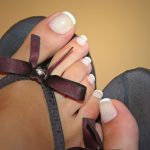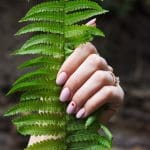That was just the beginning of a massive popularity explosion. Within a few months, everyone I knew was extolling the virtues of gel — how long it lasts, how it resists chipping, how it stays beautiful through the rigors of even the most extreme polish-punishing scenarios. But like every seemingly too-good-to-be-true beauty craze (remember Brazilian blowouts?), the creeping discussions of the downsides were inevitable. People were worried the arduous removal process could damage the nail bed, were concerned over the UV polish-curing lights contributing to skin cancer and complained about the hassle of having to go to a salon for gel instead of quicker, cheaper DIY options.
One of the big question marks that drove some gel fans away was the fact that early gel formulas used UV lamps to cure and harden the gel into its magical shell-like state. In an age when tanning beds are fast going the way of the dodo, the idea of giving your fingertips a concentrated dose of UV light was a skin-care nut’s nightmare. Some argued that the added UV exposure was minor for the average salon-goer; others said that any amount of fingertip tanning was a health risk. The debate helped inspire the nail industry to move away from classic UV lamps toward faster-curing LED — but that switch may have been more of a matter of re-branding than a major technology revolution.
Removal has always been a sticking point on gel manis (quite literally speaking). Modern gels, known as soak-off gels, are typically removed via a soak in 100-percent acetone, whereas older versions required files to bare the nail. Unfortunately, some salons give the two formulations the same treatment, utilizing files and other tools to speed the removal of soak-off gels.
 Pedicure Tips for You
Prev post
Pedicure Tips for You
Prev post


